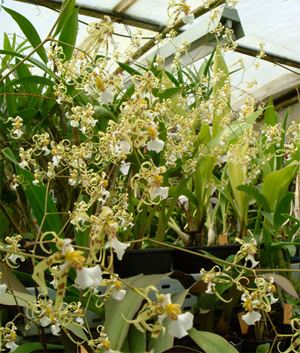Kingdom Plantae Species P. brasiliense Rank Genus | Scientific name Phymatochilum brasiliense | |
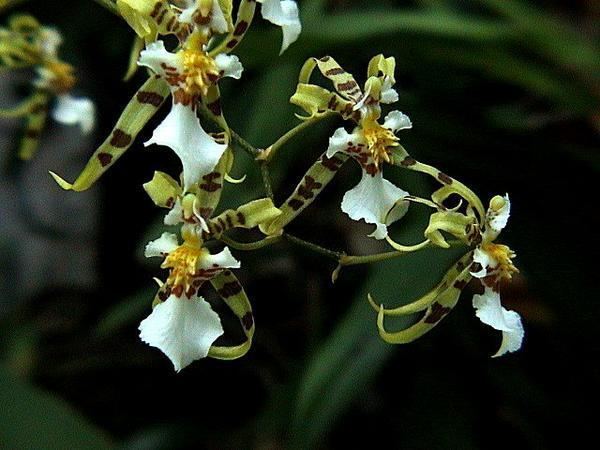 | ||
Similar | ||
Oncidium phymatochilum
Phymatochilum brasiliense is an orchid species, inhabitant of Serra do Mar mountains in Brazilian southeast and northeast, which vegetatively resembles Oncidium species, however, is more closely related to the genus Miltonia. It is the only species of the genus Phymatochilum.
Contents
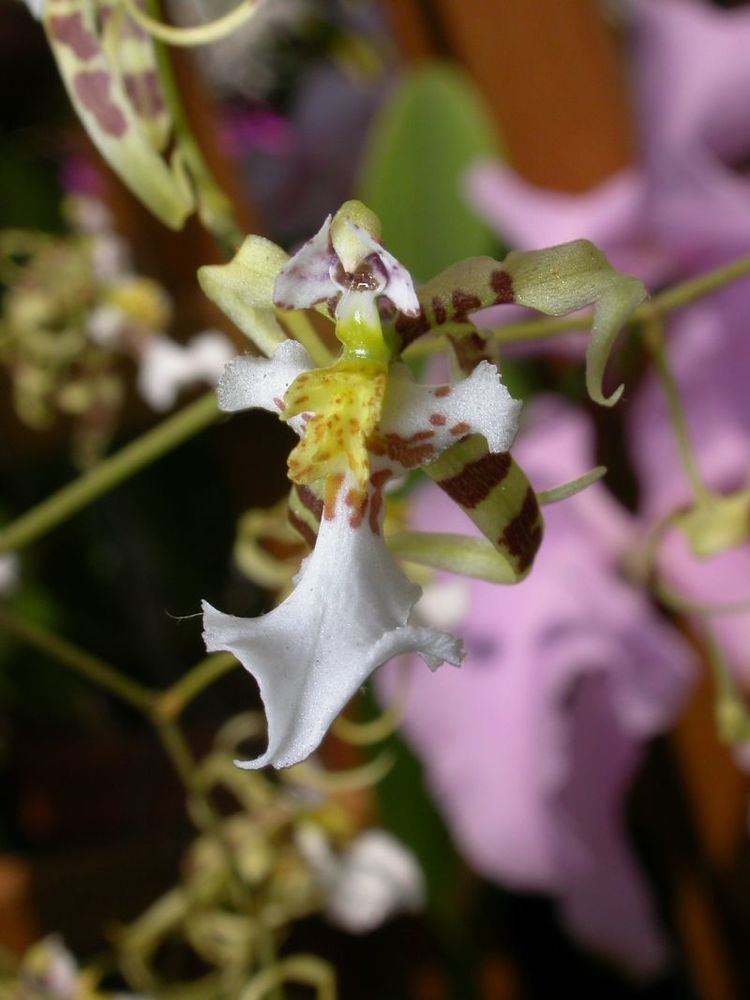
Distribution and habit
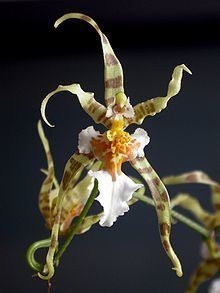
Phymatochilum brasiliense is a comparatively large sympodial epiphyte species which inhabits high areas of the Atlantic Forest of Rio de Janeiro, São Paulo, Espírito Santo, Minas Gerais and Pernambuco States of Brazil, particularly in the warmer areas around Serra do Mar chain of mountains, where it is somewhat rare. It grows under the shadow of trees, however, mostly near the jungles well ventilated clearances where it can get brighter light, between 600 and 1,300 meters of altitude in dryer areas. It ordinarily grows over the trees where the shade is not intense, on thick branches.
Description

Phymatochilum brasiliense presents a large number of robust, long and simple or slightly branched roots shooting from a highly short and robust rhizome which gives birth to aggregated pseudobulbs. The pseudobulbs are erect, smooth and light green when young and later minutely wrinkled and brownish green, very robust and large, which may vary form slightly fusiform to the most common rounded shape although clearly flattened that bears one leaf only At the base the pseudobulbs are protected by four large distichous, carinated, imbricating and subequitant bracts, the longest of them the same length of the pseudobulb. The leaf is erect, slightly concave and curved, leathery and thick, rigid despite somewhat flexible, meaning it will not break when it is slightly curved; at the base it is folded; green on the face, presenting numerous nervures, paler and brownish on the back where it shows a salient medium nerve. The inflorescence is basal, slender, pale green with subtle minute purple dots, highly alternately branched and large, sometimes bearing hundreds of flowers placed at regular distances.
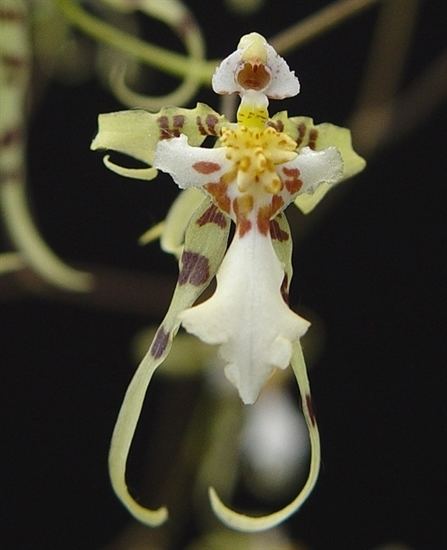
The flowers have a rounded but slightly triangular ovary; their segments are wide opened with yellow green sepals and petals, transversally stained or striped of brown; and white labellum with a yellow warted callus close to the base surrounded by brown orange stains. The sepals and petals are linear, elongated and highly acute, curved at the apexes, the petals slightly shorter and wider that the sepals and the sepals more twisted than the petals. The labellum is slightly convex, shorter than the other segments, almost flat, three lobed, the lateral ones are rounded forming tow auricles and the intermediate is triangular, highly pointed and spotless. The column is curved with two large often laciniated wings lateral to the stigma and a terminal anther. Phymatochilum brasiliense blooms between from the end of summer to middle autumn and its sweet fragrant flowers last for about two weeks. There is no reference about their pollinators.

Although closely related to Miltonia, Phymatochilum brasiliense does not have many morphologic characteristics in common with them: It presents much more robust pseudobulbs and leaves, which also are of different color and shapes. The rhizome is shorter; the psudobulbs closer to each other, much fleshier and more fibrous, almost rounded, darker. The leaves are much wider, leathery, thicker, darker and clearly veined, in all with an aspect that reminds the one of Maxillaria setigera. The inflorescence is branched, almost three times taller than the leaves, bearing more than a hundred small Oncidium type flowers.
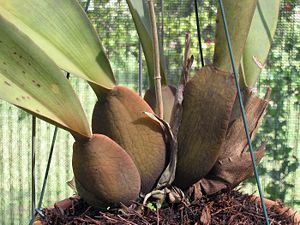
Phymatochilum brasiliense is not hard to grow. Their roots are somewhat sensitive excessive humidity therefore it is important they are potted in a well drained substrate and placed in a warm and well ventilated location at the greenhouse. As they show a rest period after blooming, it is beneficial to reduce watering while they are not in active growth period, and resume abundant watering again during active growth. Moderate weekly fertilizing with a balanced formula is beneficial during active growth. They may be potted in a compost of vegetable fiber and some medium-sized lumps of charcoal. As they usually inhabit sunny areas they enjoy a good amount of light, although never full sunlight, therefore the best place for them is the sunnier in the greenhouse, the same where the Cattleya are.
